40+ Images That Explain What Pareidolia Even Is
Have you ever found yourself lying on a tranquil, pristine, magnificent field? You, looking up at the sky, the world revolving and wind caressing your cheeks. Up in the air, a cloud passes by. It floats aimlessly carried by the atmosphere, puffy, white, a huge marshmallow. You look up and squint a bit, the rays hitting your eyes, and suddenly, you turn and go: “Hey, that cloud looks suspiciously like Albert Einstein having a boxing match with Felix the Cat!” Well, here’s the good news, you’re not out of whack. If you see a face staring back at you from your nacho dish supreme. If you look at a smudge on a ceiling and suddenly marvel at the fact that it looks a lot like your granny. If you find your next-door neighbor knocking at your door, the man off his rocker, going on about how a potato he just bought is the Virgin Mary. If you find yourself in any of these situations, don’t worry because it’s completely and utterly normal. What you’re experiencing is pareidolia. It’s completely natural and nothing you should be afraid of. Today, we’re going to dive deep into the phenomena. Give you the skinny and look at 40+ examples of it.
The Frog
Pareidolia is the tendency to incorrectly perceive an object, pattern, or meaning. It is commonly observed in humans when they see an animal’s image, a face, or an object in the clouds. Or like the pic’ below a frog.
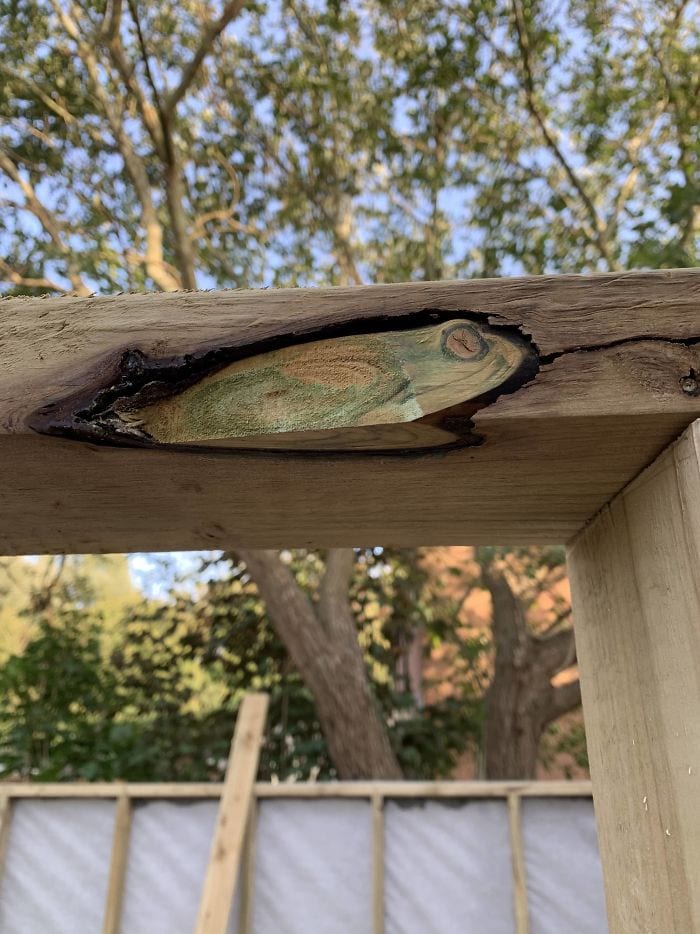
Frog and animals are one of the most common things we see when experiencing a bout of pareidolia. Why? Because frogs, particularly, are amorphous shapes, they can look like anything in the world. As the image above clearly shows.
Bart
It is very normal, and everyone experiences it. At least once every 24 hours, a person will experience pareidolia. It is incredibly natural and to the point that our brain no longer even warns us, to the point that we start to miss pareidolia opportunities like the one below.
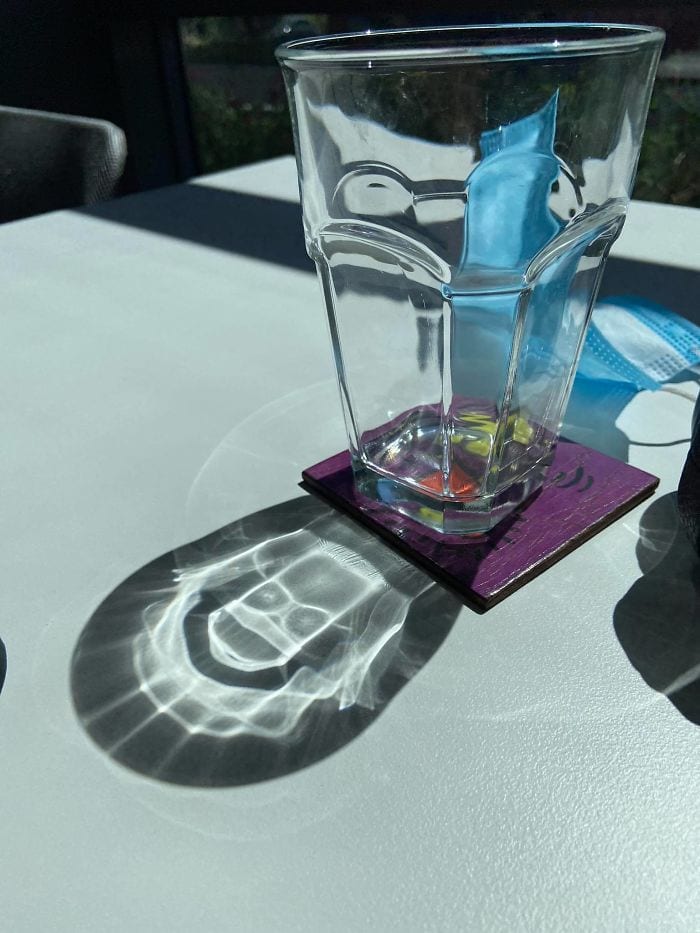
Pareidolia, and our ability to find things in places they are not in, normally starts to develop at an early age. If you see, like the pic’ above, Bart Simpson everywhere, you’re a kid of the 90s. If it’s SpongeBob, then you’re from the 2000s. And so forth.
Spider
The whole idea may extend to include hidden messages in music or hearing voices. Random noises in the air conditioning that some folks might perceive as voices from inside the wall are nothing more than the onset of this phenomenon.
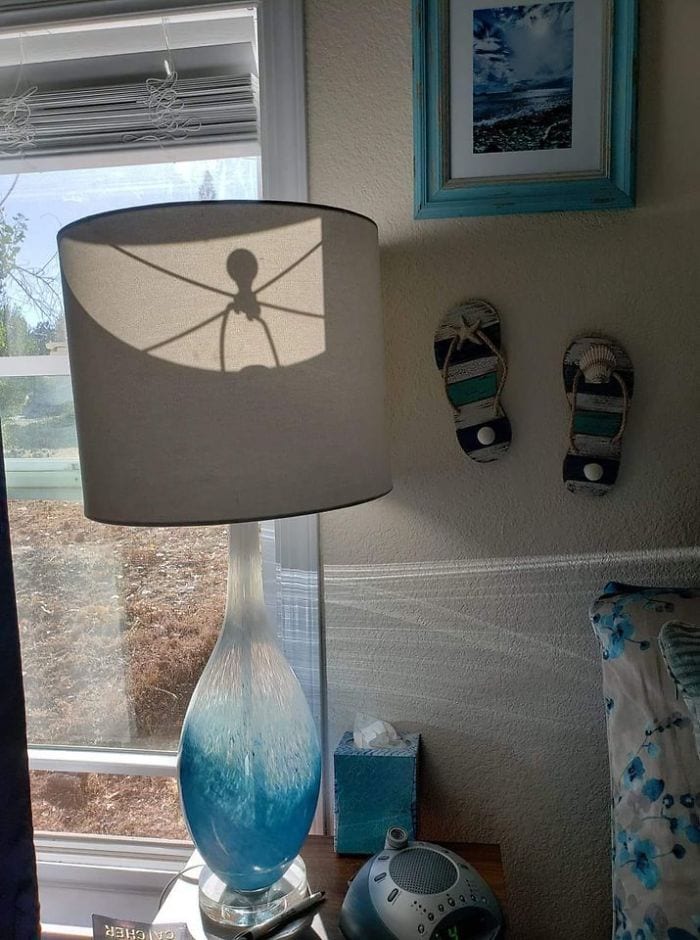
Spiders are a common thing to see in pareidolia. Why? Because like stick figures, which is pareidolia at its bases, they are incredibly simple geometrical creatures. We really don’t have to do much to see a spider. All we need is more than 4 legs and a bulbous figure.
T-Rex
For a time, pareidolia was considered a symptom of insanity or a deep-seated psychosis. People were treated for pareidolia through the use of narcotics and invasive procedures. Nowadays, it is seen as nothing more than a normal human reaction.
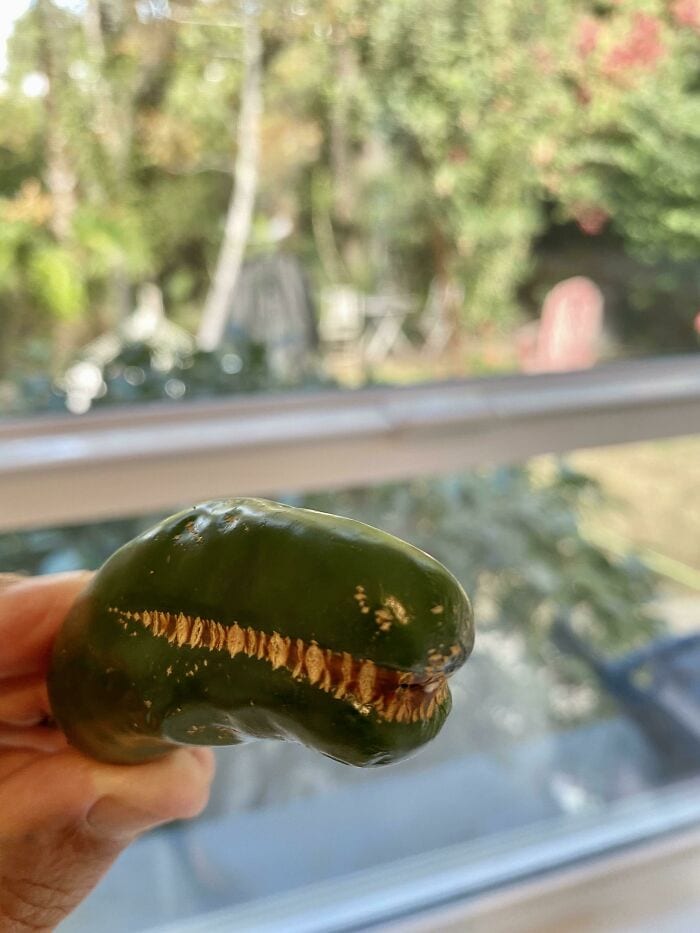
Dinosaurs, particularly the daring T-Rex, are also a mainstream of pareidolia. It same logical progression as Bart Simpsons. They are leftovers from our youth when we are beginning to ID figures. Kids, research has shown, Identify T-Rex much faster than they do their grandparents. They are just fascinated by dinosaurs. Boys and girls alike.
Feline
There’s nothing weird or funky about it. It is what it is. It is not a psychological condition, let alone one that warrants medical attention. It’s now considered something normal. Like the pic’ below, it’s something utterly mundane and occurring everywhere.
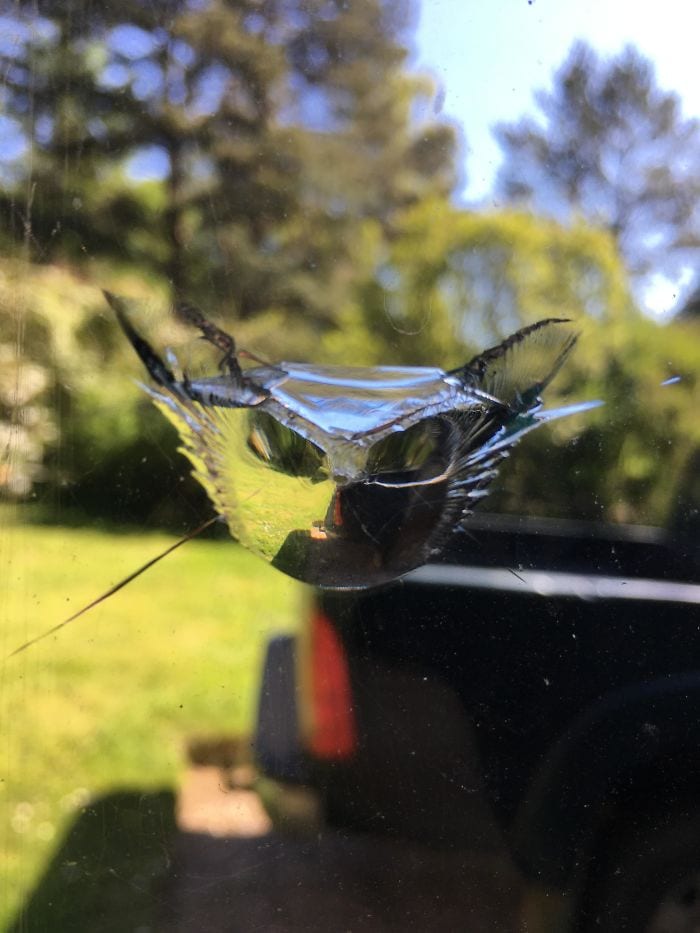
Cats, as we will talk about a bit later on in this article, are apex predators. That’s why our pareidolia red-flags seem to pick their patterns out of thin air. Our forefathers were deathly afraid of cats and other felines.
Tree Man
The phenomenon is so widespread that scientists have even managed to teach computers and AI tech’ to interpret visual cues as other images. The programs are now “seeing” faces and other images where there isn’t one, like that pic’ below.
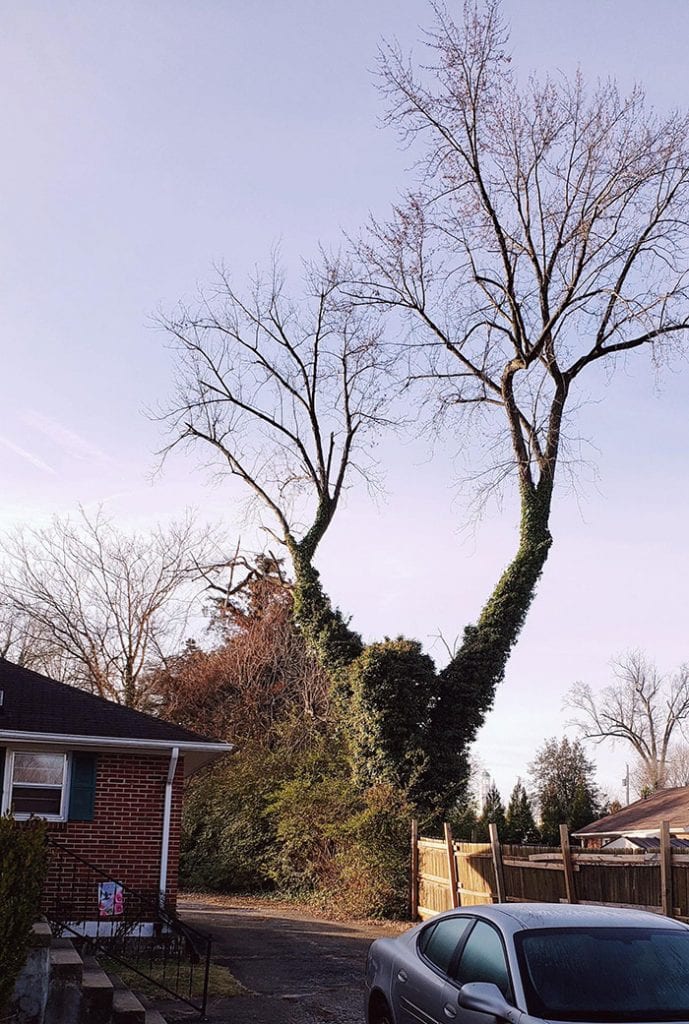
The most seen figure in pareidolia is the human figure. Why? It is one of the first figures we identify and have an emotional attachment to from a cognitive level. Our parents. That’s why we look at the moon and see a face.
Face In The Ear
Like we said, even the future Terminators experience it. It’s so normal that we’ve programmed a computer to act so humanly that they make perception mistakes. Computers now have the capacity to see patterns and create images from them where there are none.
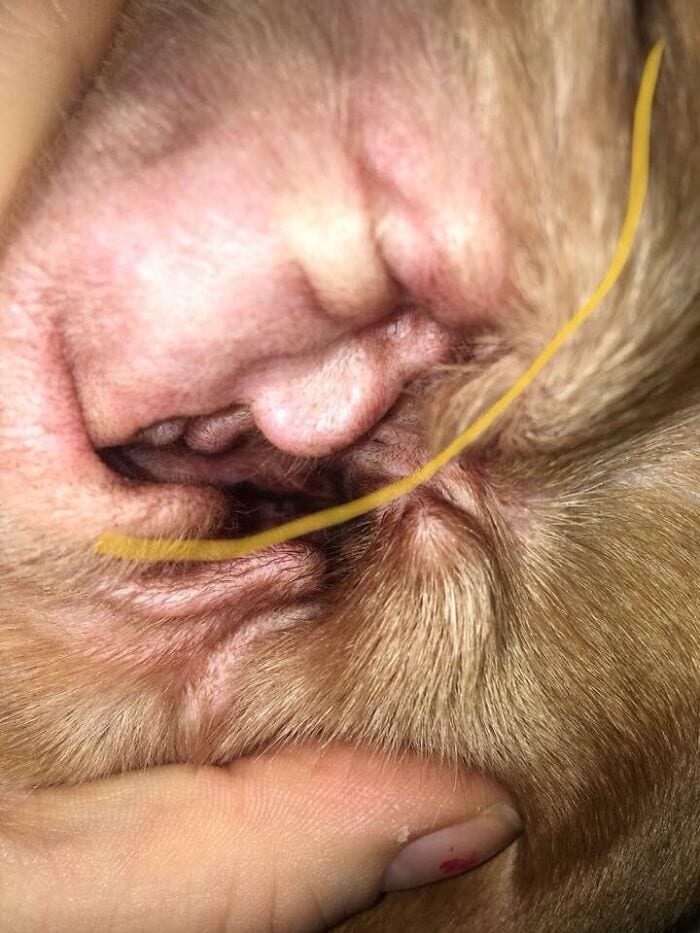
That’s why that face isn’t so strange. It’s completely normal. It’s also why we see figures in the night sky and use those figures, created by stars, to navigate by. It’s something we have adapted and something natural to our very being and existence.
Groot Plant
The most common canvas to have a bout of pareidolia is the sky or the moon. It is fairly common to see faces, images, cartoon characters, and even objects in clouds. They are everywhere. To what point? Read on.
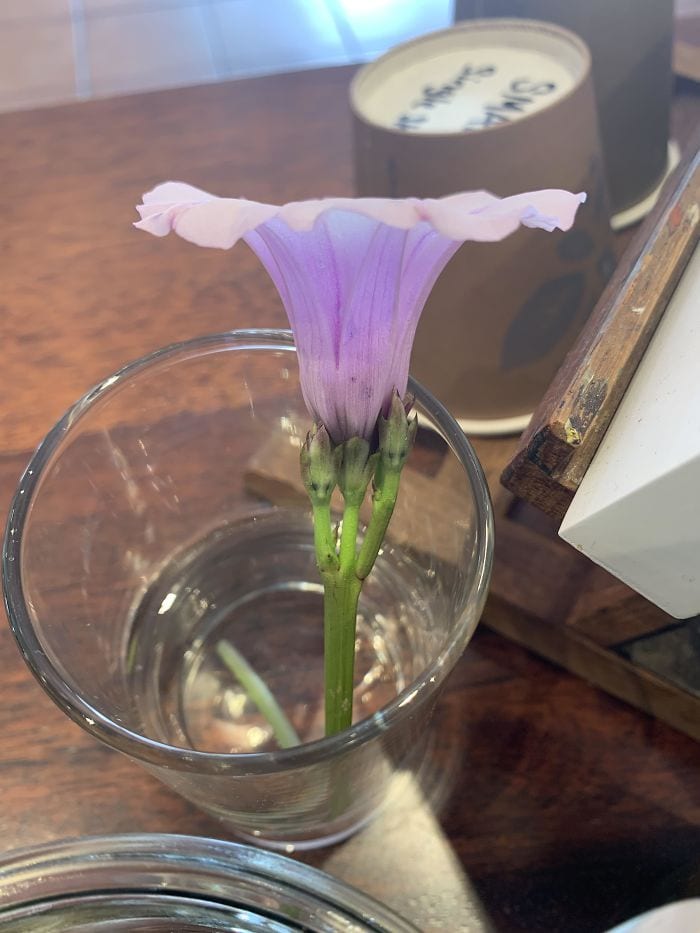
After the movie Guardians of The Galaxy came out, one of the most seen pareidolia offshoots was the ever-happy Groot. People started to see the figure everywhere. Finding the Marvel icon’s face in just about everything out there.
A Bride and Groom
To what extent? Well, to the point where at least 80% of known UFO sightings can be traced back to a tricky cloud. That right! Scientists have uncovered that 8 out of 10 UFO sightings can be traced back to a single oddly shaped cloud.
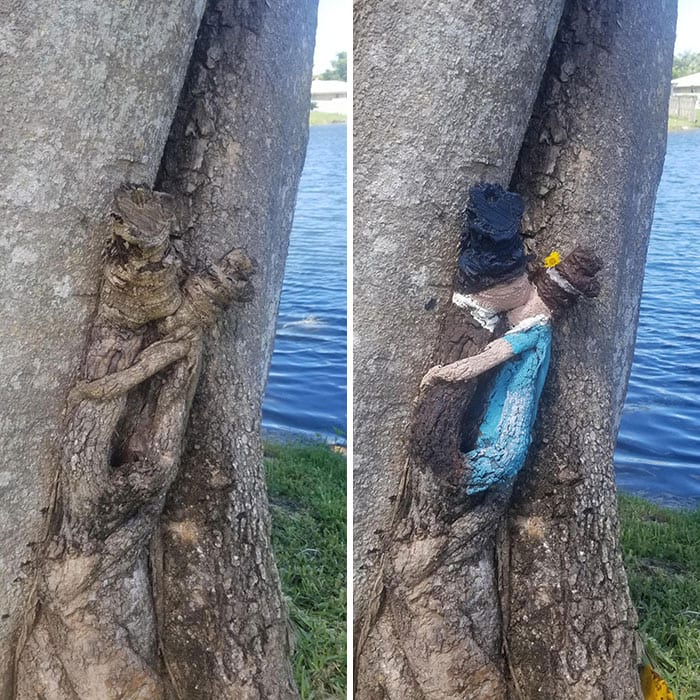
Pareidolia allows us to see things like that pic’ above in a tree’s bark. Something as normal as a web of roots can turn into a bride and groom experiencing a one-of-a-kind moment on their wedding day. Projecting is part of pareidolia appeal.
Dog
The other canvas that inspires pareidolia is the moon. Using telescopes and astronomical equipment, folks have seen all manner of odd things on the moon’s surface. Things like the legendary man on the moon. Or the cat on the moon’s surface.

Take a long hard look at that pic’ from above; what do you see? A person, a man, or… maybe a dog? It took us a while to distinguish what it was. Not so much what we were seeing, but whether it was a man with a sweater or a dog running towards the camera.
Face in the Tree
The word pareidolia, at an etymological root, derives from the Greek tongue. Those rascally Greeks always inventing new words. In the first half, PARA means “beside, alongside instead of”. Like that pic’ below, we associate things with other things based on what’s close to our perception.
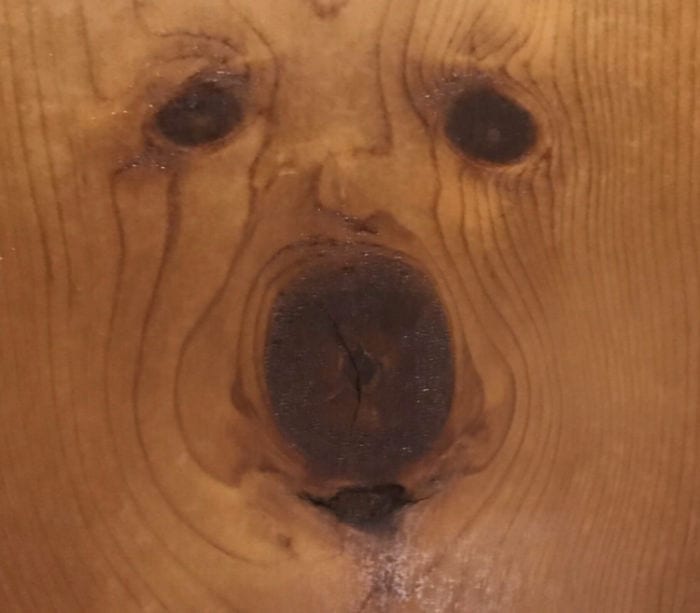
We make connections based on our experience. And that’s why we normally see faces. It is the object we most associate with… the human face. Pareidolia is just that, creating leaps and associations based on our experience and the thing we most see in our day-to-day life.
The Sloth From Ice Age
The second half of the word pareidolia is a noun, EIDOLON, which in turn means “image, form, shape”. For ages, the Greeks had used the term just for that. To describe the idea of seeing something for something else.

Back to the Bart Simpson parable. We love seeing cartoon characters everywhere. That’s why that user above instantly said that he saw that funky sloth from the movie franchise Ice Age in a plank of wood out in the back of his yard.
Polar Bear
One of the first times the term was used in the western world was in Germany. “Pareidolie” was used in a piece/article by renewed German psychiatrist Karl Ludwig Kahlbaum. He sort of coined/robbed the term and made it mainstream.
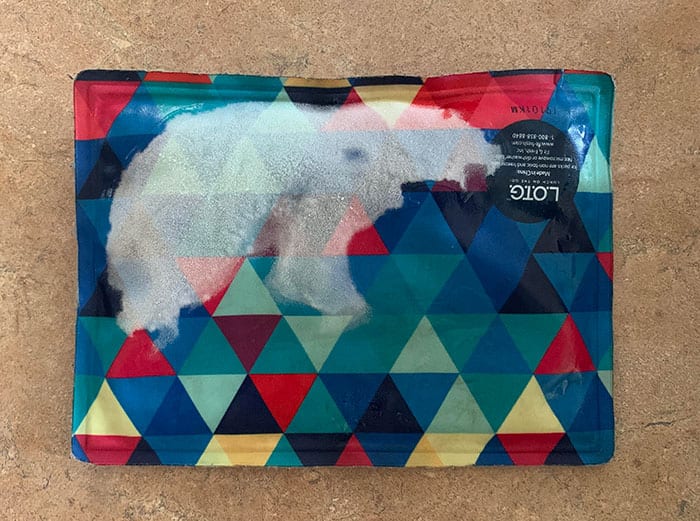
Bears are also common forms when experiencing the pareidolia phenomena. They are apex predators. Like we’ve discussed, pareidolia helps us quickly identify threats in a split second. It’s a survival mechanism that we’ll get to in a couple of entries.
Staple Face
Karl used it in his 1866 paper, “Die Sinnesdelierien,” to describe a subject’s psychosis. Or mental error in perception. Like we said, back then, seeing a face in your potato was a big No-No. Something like that face on your stapler below would have warranted a stint at a mental hospital.
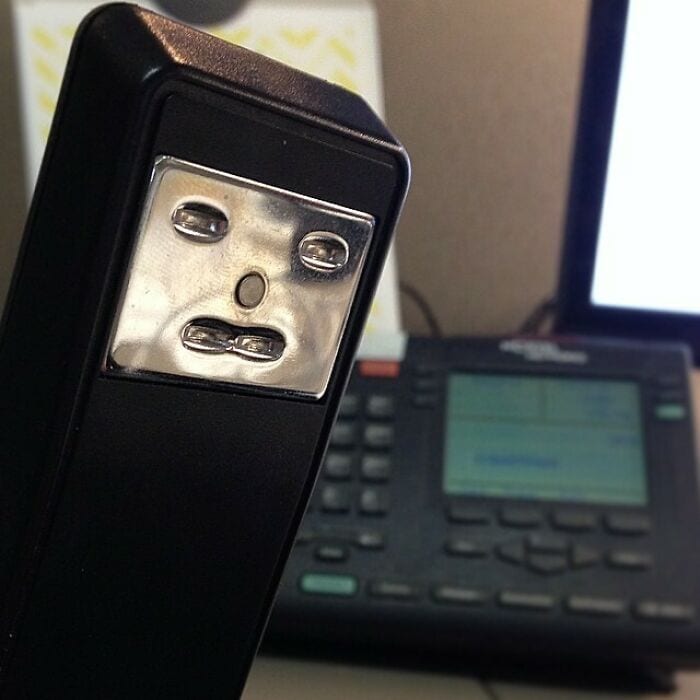
This picture above is just fun. That’s part of the wonder of pareidolia that it lends our lives a measure of whimsy and fun. We start to see faces in the clouds, creatures on our shirts, smudges on our ceiling.
Dog Face
Karl’s paper was later reviewed and approved the following year in the Journal Of Mental Science. The journal skyrocketed the term. From coast to coast, from country to country, every shrink got a hold of a copy of the Journal.
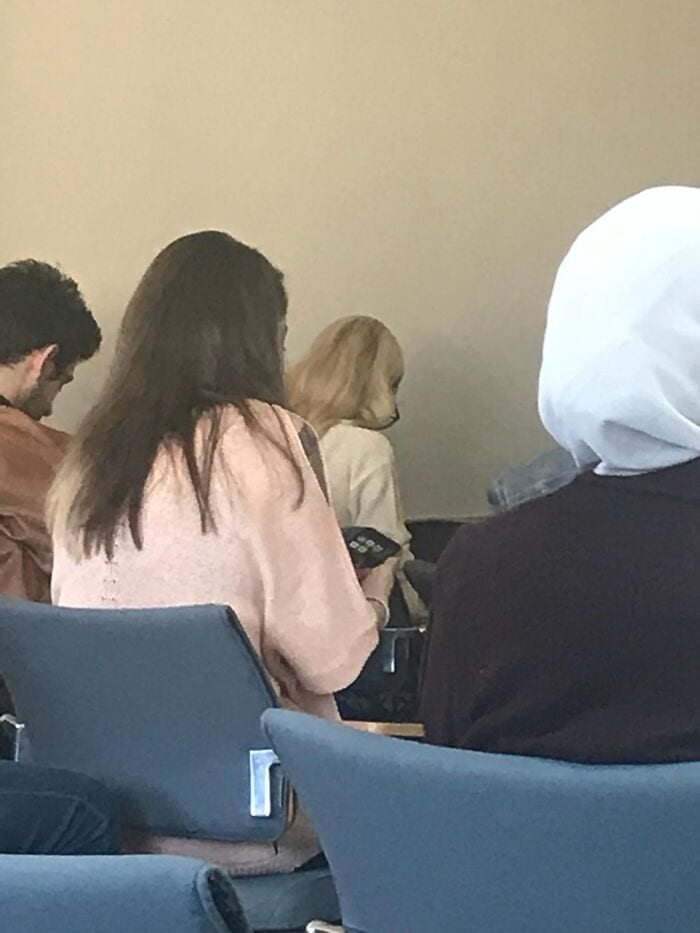
Something like that pic above, being a dog face in the crowd, even if it’s a golden retriever, would have landed you in the psychiatric ward. For ages, people were afraid of blurting out what they saw. Only madmen were permitted that privilege.
Hedgehog
The Journal spread the term, and everyone started using the word pareidolia to describe a “… partial hallucination, perception of secondary images, or pareidolia.” Seeing things like an animal in your coffee was akin to taking off your clothes and saying that elves were out to get you.
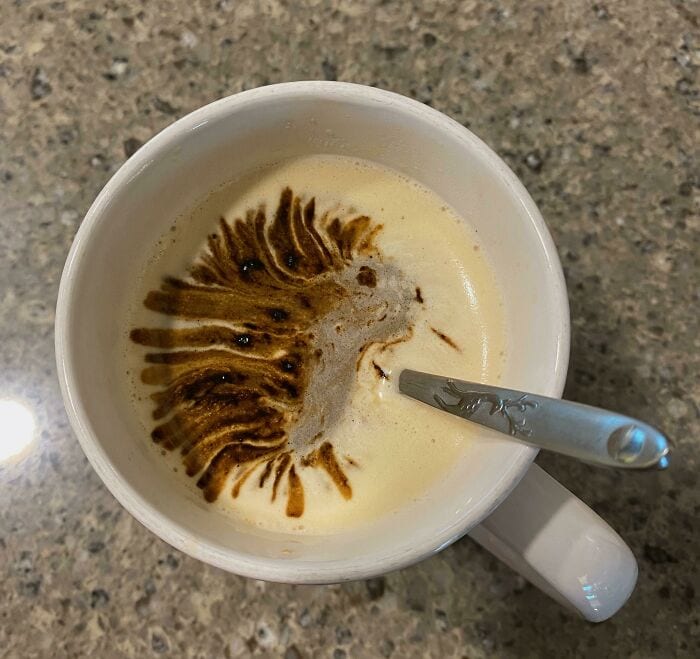
That image above is a clear example of pareidolia. Part of the idea behind the phenomena is that it sometimes needs an observer to tell you what to see. And, once they tell you what it is, you can’t help but always see it.
The Turtle
Now, why do we experience pareidolia? That’s the million-dollar question. Why do we interpret random images or patterns of lights as something else? We’ll that mystery has stumped us since creation, and for centuries no one knew the reason why.
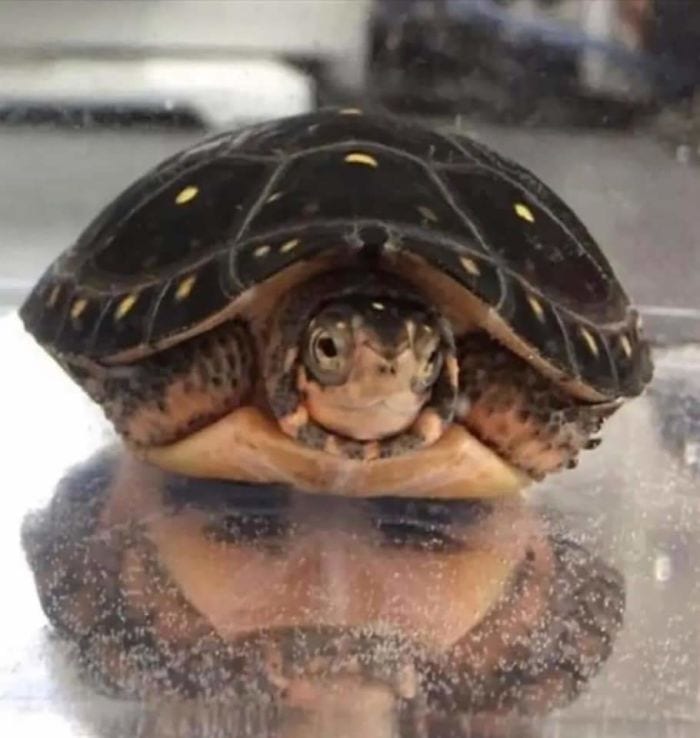
No one really knew why we saw a face with a very inappropriate mustache when it was just a turtle in her shell with a mirror underneath. That was part of the perceptional anomaly. What was causing it and why?
The Shadow Man
Thankfully, as to why we experience pareidolia, science came to the rescue in 2009. Through the use of magnetoencephalography and MRI machines, doctors pinpointed where pareidolia or the process that leads to it happens in our brain.
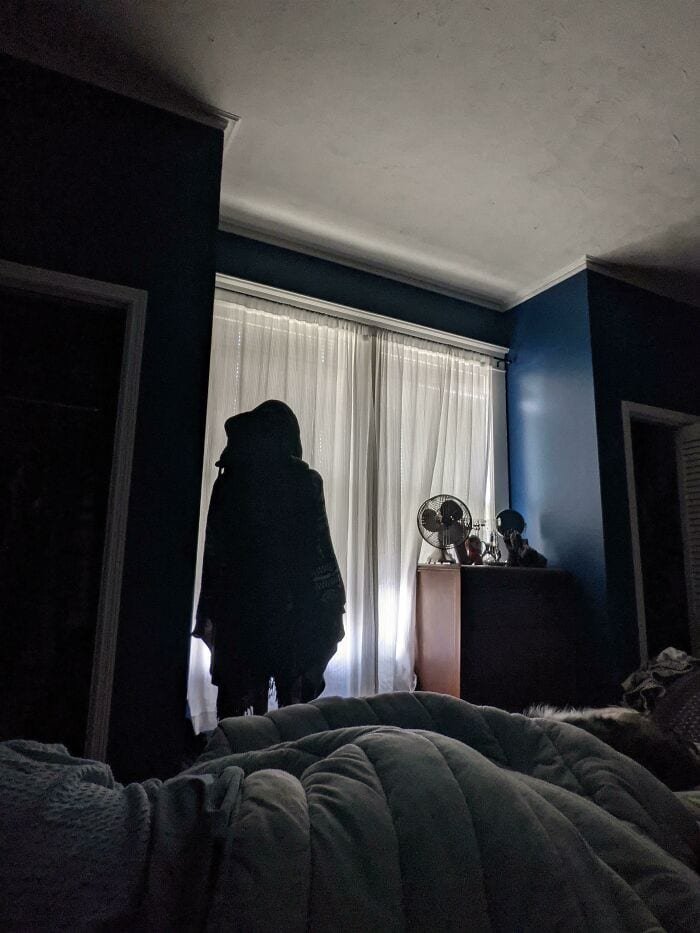
The shadow man above, a collection of rags hung over a clothe’s hanger generated in the user’s brain in a section that has to do with identity. A section that is primarily focused on identifying faces and classifying which are friendly and which are a threat.
The Bull
There’s a space in our brain that houses images, primarily faces. It develops during the early days of cognitive reasoning and when we are first developing an identity based on how we look in the mirror. That’s the inception point of pareidolia.

The next thing our brain stores is animals and their configuration. That’s why we started seeing things in the stars, and we partly developed a Zodiac system based on animal figures. Taurus, like the picture up above, a prime example.
The Worm
Not only did we develop pareidolia as an offshoot of the cognitive process. A detritus left from those days when we were finding out who we were. But also as a survival tactic. Why a survival instinct? Well, read on. But first, let’s talk about that worm.

How many times has that above happened to you? A crumb of delicious blueberry muffin batter is baked to a scorching intensity and blackened beyond repair? Into a weird-looking charred slug monstrosity? Well, it happens to all of us.
The Grinch
Why is pareidolia a survival tactic? Well, because it helps observers to identify faces or objects in the shadows or in the forest. This is critical to our ability to survive out in the open. Or to rescue Christmas!
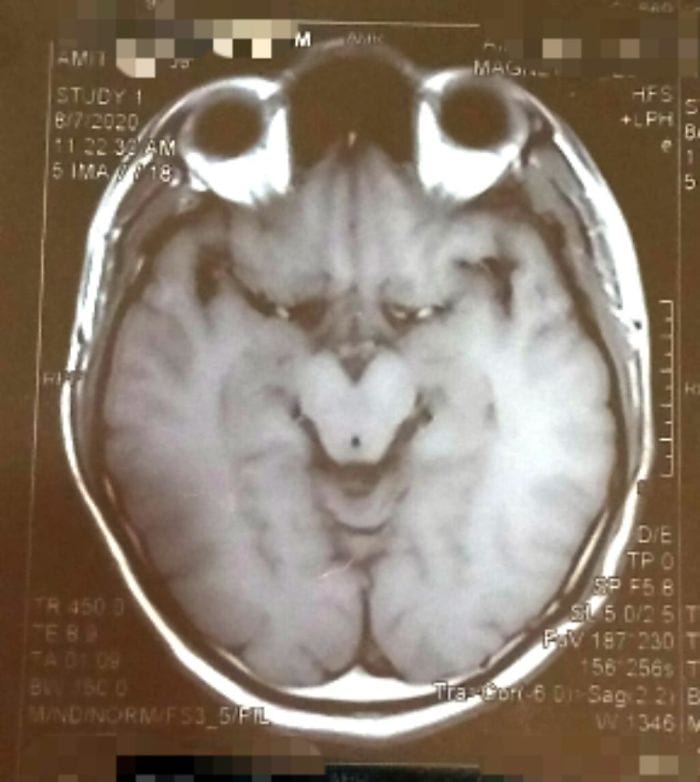
Why Christmas? Because as that picture above will you show, the Grinch is everywhere. That dastardly knave ready to pounce up from the shadows and make like a bandit with all your Christmas gifts. Another cartoon character is brought to the front by pareidolia.
Dog within a dog
Natural selection grabbed that leftover from the cognitive process and repurposed it. It weaponized pareidolia by tying it to our emotional state. Pareidolia helps us identify and recognize faces or figures and tying them to a familiar emotional response.
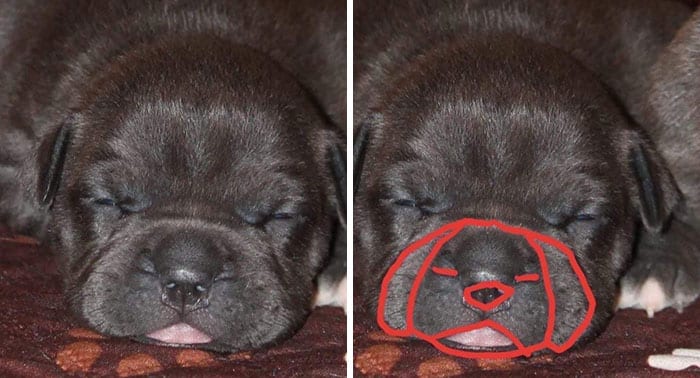
Or sometimes we just like to make things up. See things that aren’t really there. Silly things that our mind crafts and gives us a laugh. Like that picture from above. A dog snout as a tiny dog? We just don’t see it.
The arm
When we see a face in the dark forest, even if it’s not there, pareidolia kicks in, it tells us to be cautious and flee just in case. That’s why, aside from human faces, we also see animals a lot. Because in the forest those were the two things we had to be worried about.
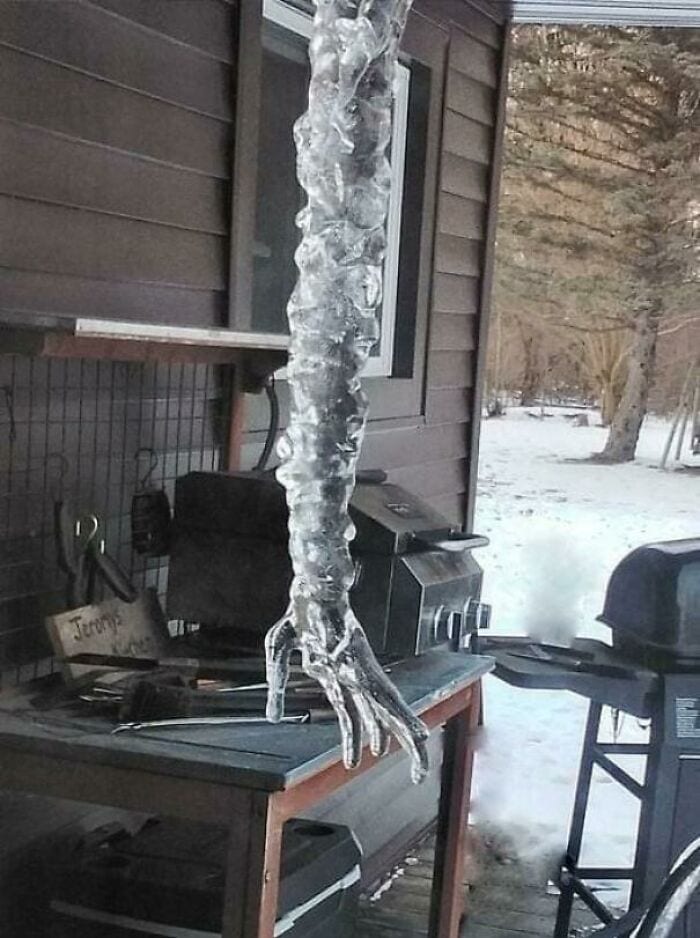
Things that creeped us out or posed a danger were our number one priority. That’s why it’s plain to see why we would see a horror film arm reaching down from the heavens instead of just an icicle formation.
Pig With Rollers
Now, let’s get started talking about the fun things about pareidolia. We’ve delved into the psychology behind it, the etymology, the history, and even the science of it. Now it’s time we talk about Big Foot. That’s right, YETI.
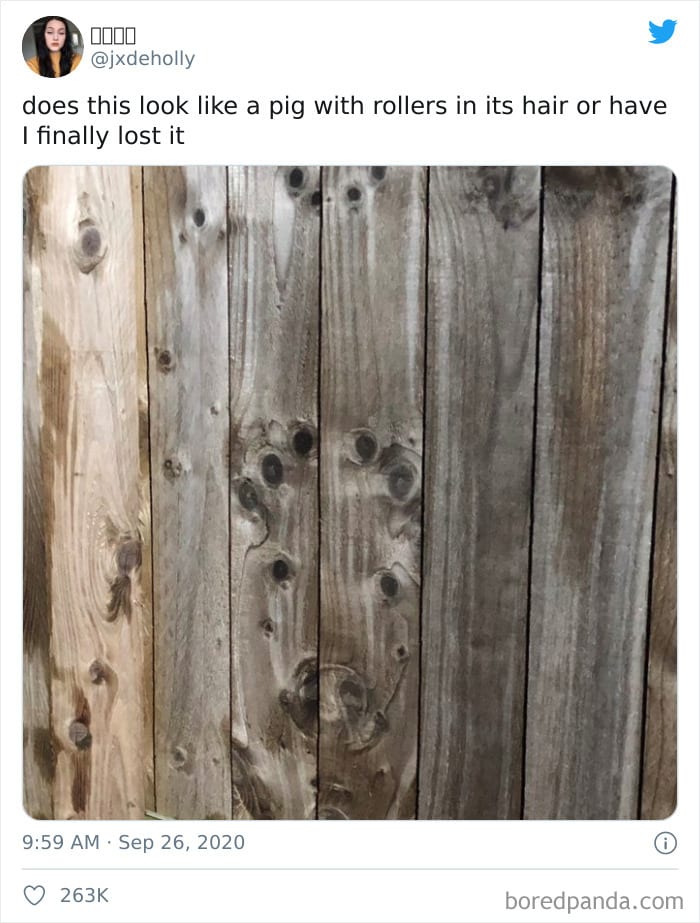
Part of the reason pareidolia is such a hit is that it allows our minds to race and make things up. It allows our imagination to fill in the blank spots. Like the picture above, connect the dots and see the pig with rollers.
The Fox
Did you know that, like many UFO sightings, most cases of Big-Foot encounters can be traced to the doorstep of pareidolia? That’s right. We’re not seeing a Yeti, but our brain is telling us we are. Why? You may ask.
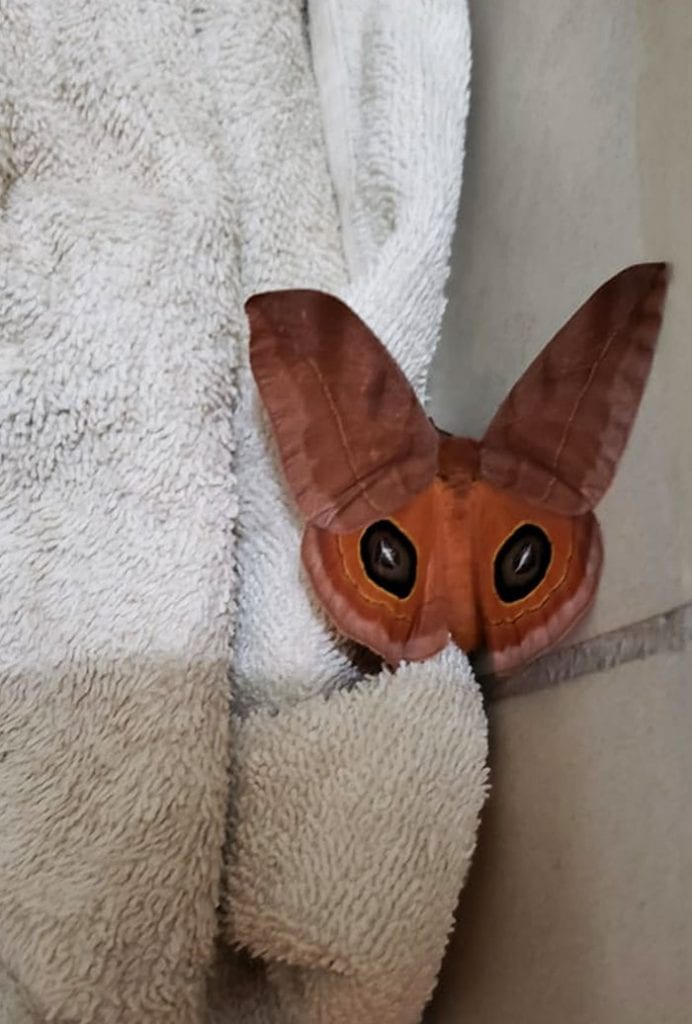
Because, like the cute little weasel above, pareidolia helped us identify threats or animals that might hurt our chance of reproduction. A fox could kill our livestock and rob us of nutrients. That’s why our brain can pick them up, even when they aren’t there.
Hippo
Well, the reason we see a Sasquatch out in the open when – in a blink and you’ll miss it stance – is mainly because of pareidolia. Our brain has this fault… it doesn’t clear natural selection’s CACHE. Leftovers that are stored in our brains.

The hippo, despite what we’ve been taught, was the great African killer. It killed more humans than lions, crocs, and other predators. That’s why our survival CACHE can instantly zero in on them, even when they are just a rock.
Owl
We’ve evolved to a certain degree but not enough. We still maintain things from our neanderthal forefathers. Things that were necessary to them but are obsolete in the present. Things like pareidolia with was a great defense mechanism, but now you just don’t need it.

That owl, actually a mushroom, above is a revenant of our caveman days. Our brain was always in survival mode and saw predators or creatures that could rival our dominance everywhere. It’s part of what makes us who we are and allowed us to prosper.
Man On A Potato
Things like that were crucial during the rise of sapiens as dominant species. One of those leftovers from our first days out in the open fighting to the death against other species is the Big Foot phenomenon. It’s whats to blame for Sasquatch.

The man on a potato is a clear example of pareidolia and how it is an evolutionary vestigial tail. The roots of the potato instantly harken to a man or a person. BUT, in reality, it’s an optic error on our part.
Beatroot Man
When we think of humankind’s rise to dominance, we usually think of Darwin’s descent of man. The little fish coming out of the water, going uphill and slowly transforming to an ape, and then a caveman, and then a sapien, and then a conquistador and finally a hipster with a cellphone.
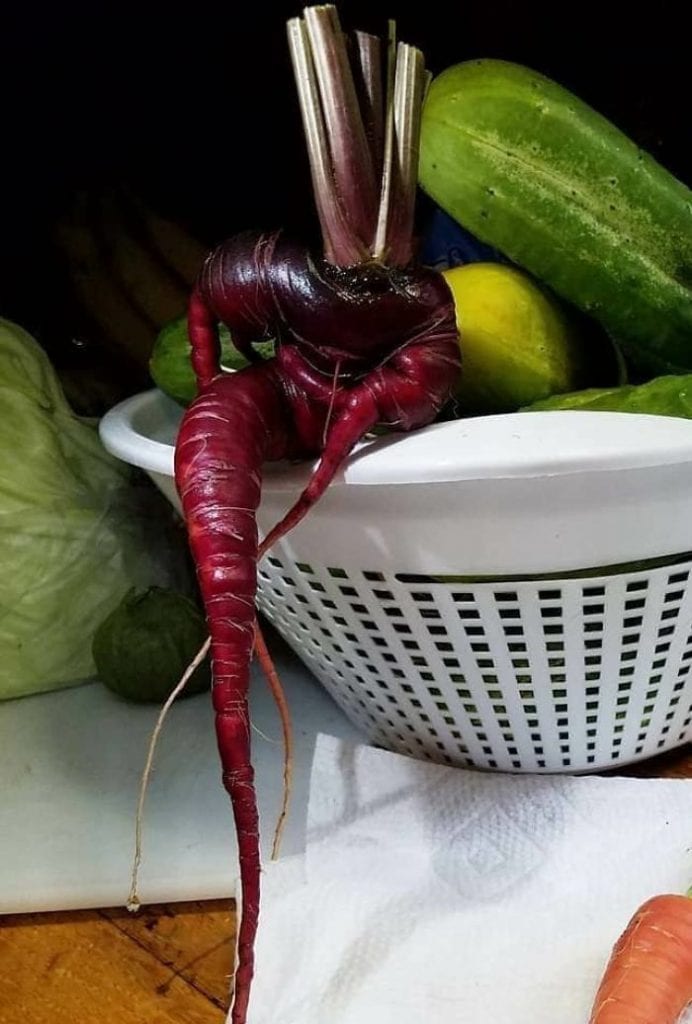
Or the beetroot man. Our ascent as a dominant species partly traced by our imagination and our brain, the one tool we had better than all other animals, taking the steering wheel. Isn’t it strange to think that that pic’ above is a key display of one of our best survival mechanisms?
The Doggie in the Fridge
Well, in Darwin’s Rise of Man, there’s a section where ape is followed by the hunchback, then by Homo- Erectus, then by Homo- Sapiens, and so forth. Well, it wasn’t like that. Not by a long shot. Our teachers were wrong.
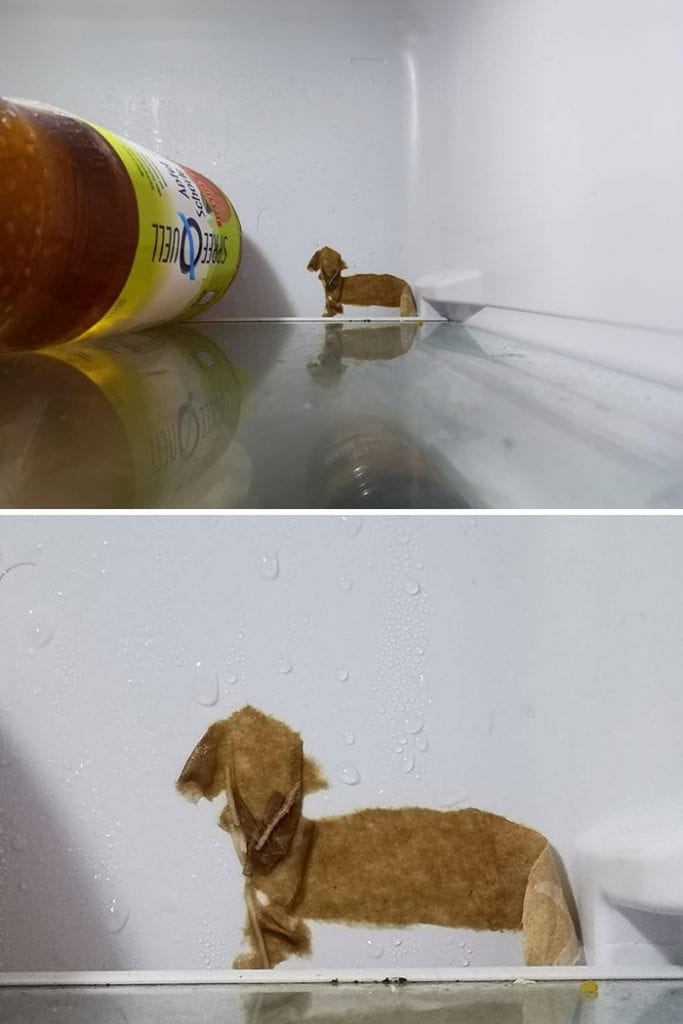
How many times has that happened to you? That above. Something gets stuck against the back of your fridge, and suddenly, boom, you find a dog or some animal pattern pasted to the back of the wall; it’s normal, and it happens to all of us.
The Pie
In reality, there was a period, a LONG, LONG period, in our evolutionary history where all those ape descendants, homo-Erectus, homo-habilis, Ardipithecus, and dozens more – not to mention apes, chimps, and gorillas – shared the same space.
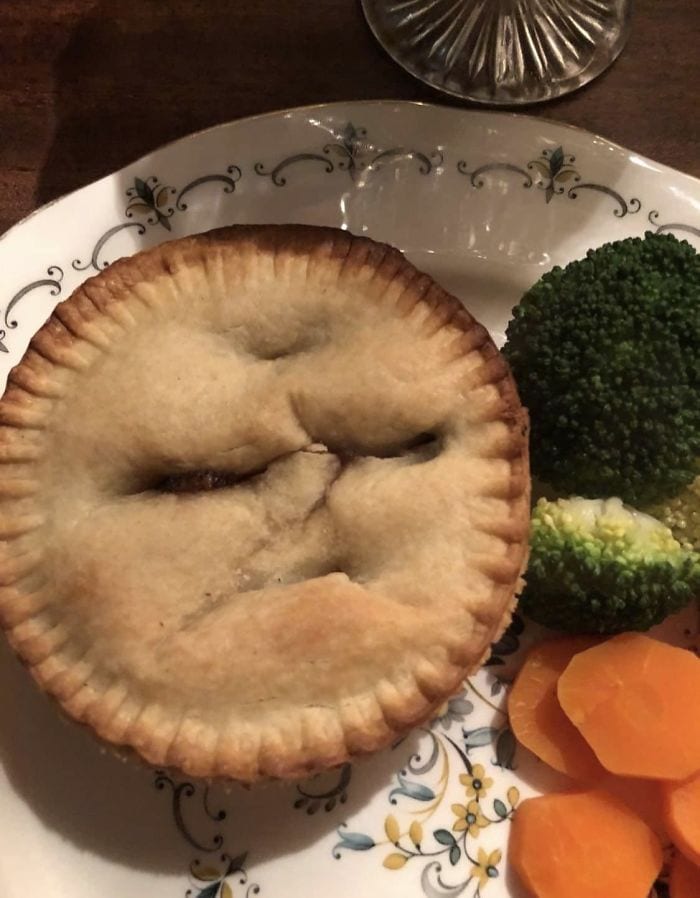
So we started seeing ghosts where there were none. Or faces in the cloud where they were none. Or in the shadows. Or in a pie. Because our brain was scared silly. Scared silly of all those nasty critters, like us, that wanted our food and land.
The Ice Ghost
Homo Sapiens were NOT the dominant species. We were just the newest one. Suddenly we had to compete with stronger, more primitive hominids. They were faster, more brutal, and huge. We were weak and couldn’t even lift a rock in defense.
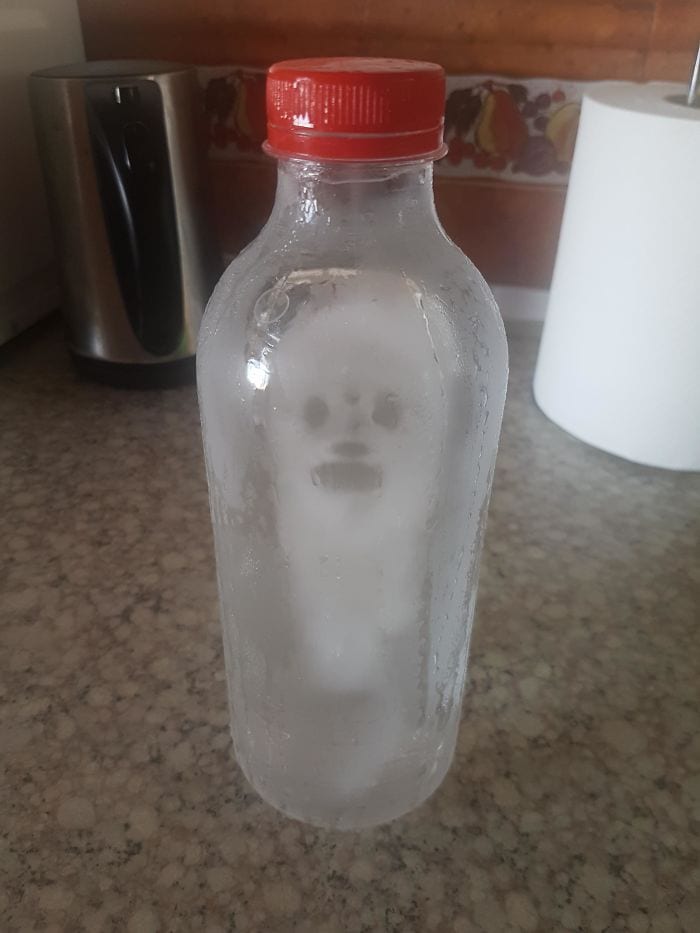
So, after eons, our brain developed pareidolia. So we could see faces that posed threats to us. Faces like that one stuck in the bottle. Ice melting into a strange and spooky figure just stuck there for all to see.
The Snail
So, we had to adapt. We had to outthink them. After all, that was our only advantage: we had bigger brains. Part of our mechanism to survive was pareidolia. It had been developed over the years and centuries. That was our key.
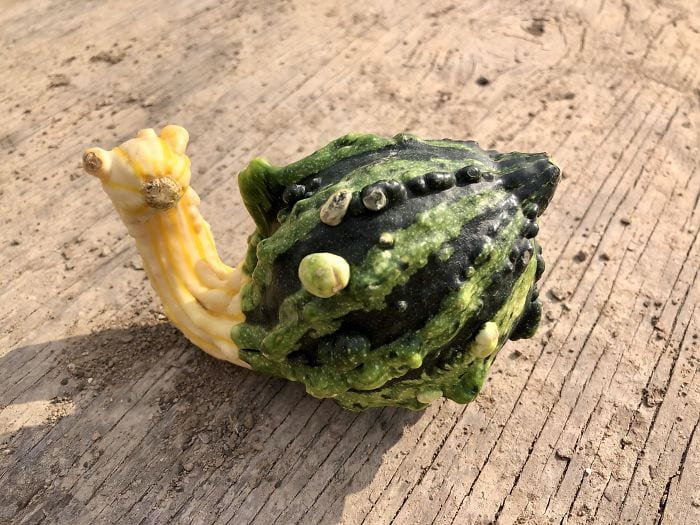
We began by interpreting patterns and giving them a threat level. But as the years went by and all other dominant species went extinct, pareidolia grew a sense of humor, and things like that snail above started popping up.
The Cat in The wall
We started seeing our cavemen ancestors, lean, tall, strong, covered in fur, in the shadows. This leftover created our ability to see Big Foot. To go into a forest and slink back, at a genetical level, to the Early Pleistocene. Our brains short-circuit, and our survival instincts took over.
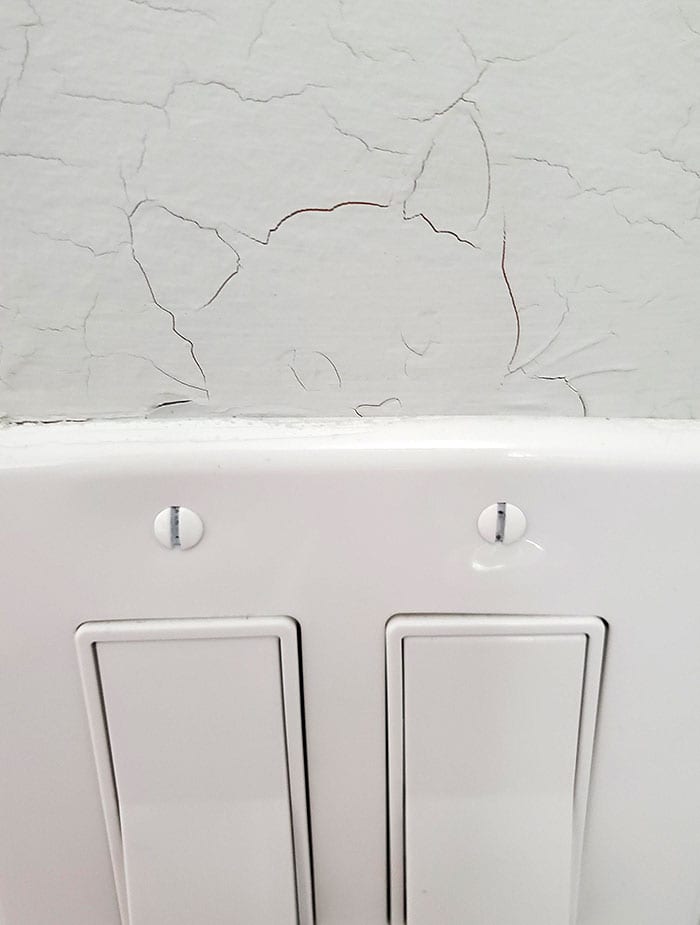
Aside from caveman other primates or hominids, we also had animals to fear. Things like felines were one of our main competitors. Huge cats ruled the landscape and killed our forefathers, whole villages, in bloodlust rage. That’s why we see cats everywhere.
Thumbs Up
Pareidolia is one of the main reasons why we see Big Foot… Not only Big Foot but most cryptids, animals whose existence or survival is disputed at best. The ever-elusive monsters and boogeyman that hunt our night and fuel our imaginations.
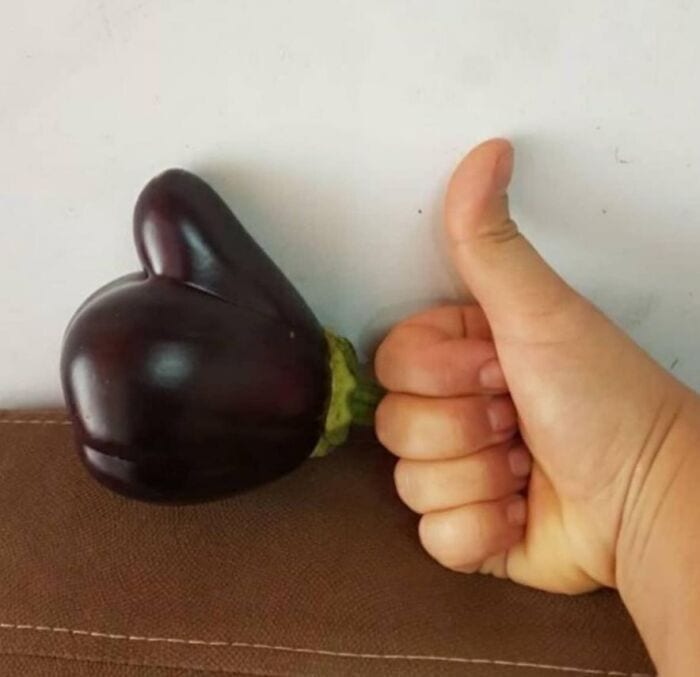
The mechanism was vital to our survival. And after a time, it evolved and started integrating things, like emoji icons. Why emoji icons? Same reason why we see the Grinch or Bart because they were some of the first things we integrated as images when we were kids.
Steam Ghost
When we’re in a lake, let’s say Loch Ness, and we see a ripple in the water, our brain doesn’t go: “gee, that’s probably just a current. Or a school of fish.” Our brain goes, “that’s a dinosaur. I just saw a dinosaur.”

The same reason why a cloud of smog or fog turns into a ghost. Our brain isn’t seeing a ghost, it’s seeing a person, and our imagination is adding all the horror connotations it has gathered from countless movies and tales.
Cat in The Dog
Why do we see Nessie in the waters of Loch Ness or other like creatures in other lakes? Because we sapiens came from Africa. We spread out from that place. A place that was full and still is full of large nasty animals.
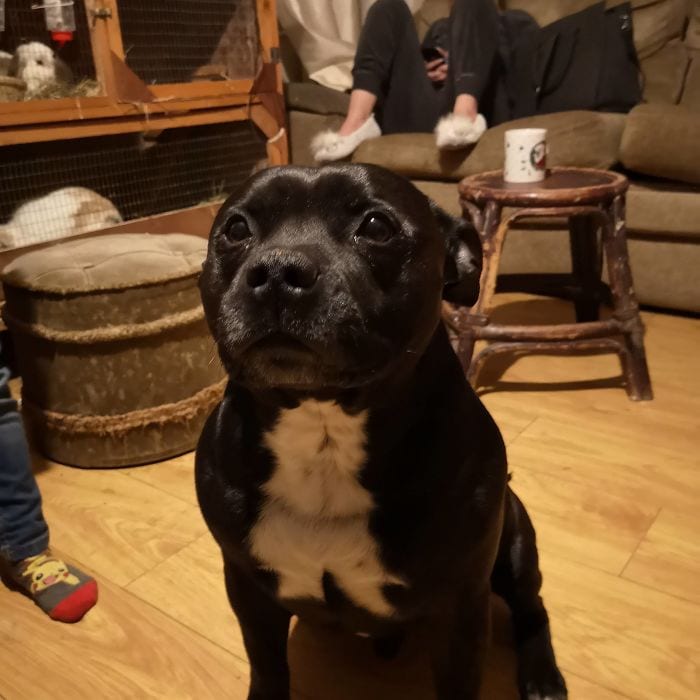
Once more, the cat parable. We see them everywhere, even on a dog’s pelt, because back in our ancestral home, we were scared silly by them. There was nothing more frightening than a cat. A violent feline ready to dine on us.
Head Rock
And where did all these animals come to feast or live near? Watering holes. Those places were crucial to our ability to survive. Because everything lived near them and it’s where we hydrated and after a while formed our villages.
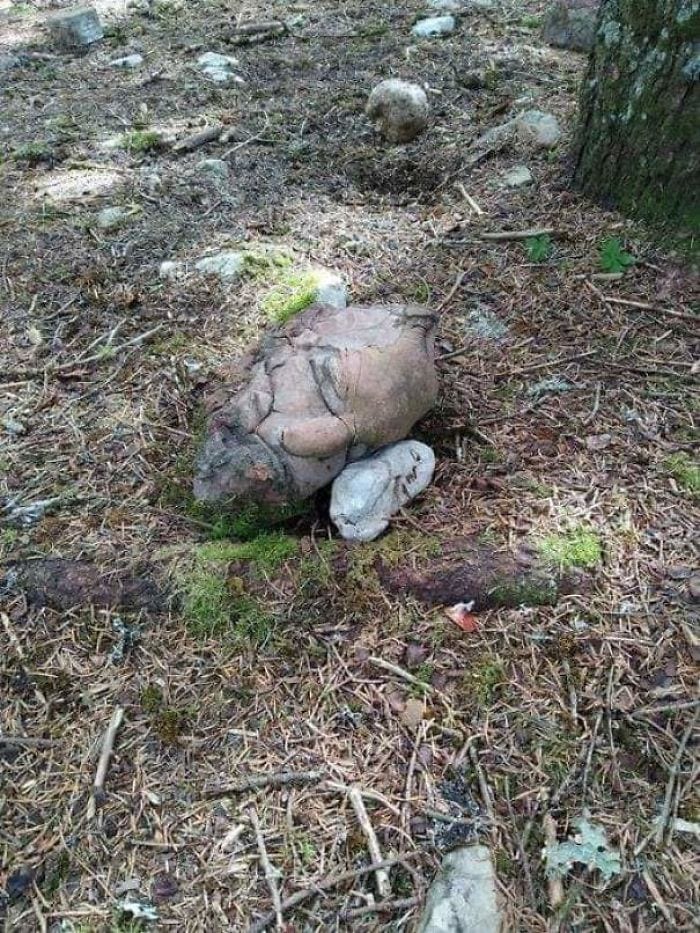
That head rock up above is a clear example of pareidolia’s need to make us see things where there are none. Because aside from other animals, and apes, and primates, the next thing we had to be afraid of was ourselves and our neighbors.
Snowman
So when we see a lake monster, it’s nothing more than our intellectual brain going postal and handing the “car” wheel to our primitive self. Slipping back into the past and defenestrating all our rational and things we learned over the years.

The snowman, like the one we see above in that wrapper, is a clear example of pareidolia at work. We created snowman in the same way we created scarecrows, to ward the beasts away. Cause’ guess what, some animals also have pareidolia.
Godzilla
Why do we see the Loch Ness monster? Or Godzilla in the clouds? Because in Africa, where we evolved from, nothing good ever came from a ripple in the water. Off the coast, giant sharks. Inland, crocodiles, and hippos.

Godzilla in the clouds is just utterly fantastic. Just imagine if that’s what we had to be afraid of. A huge radiative lizard! Too much. Godzilla in the cloud is pareidolia by way of Bart Simpson. It’s less about defense and more about it playing a joke on us.
Kitten in the Cream
The same for other critters or boogeyman. It’s just pareidolia. When we come into a dark room and see a shadow in one corner… we don’t think of a clothing hanger; we think. “Shadow man” or “ghost.” When we see something in the forest, it’s Big Foot, not a bear.
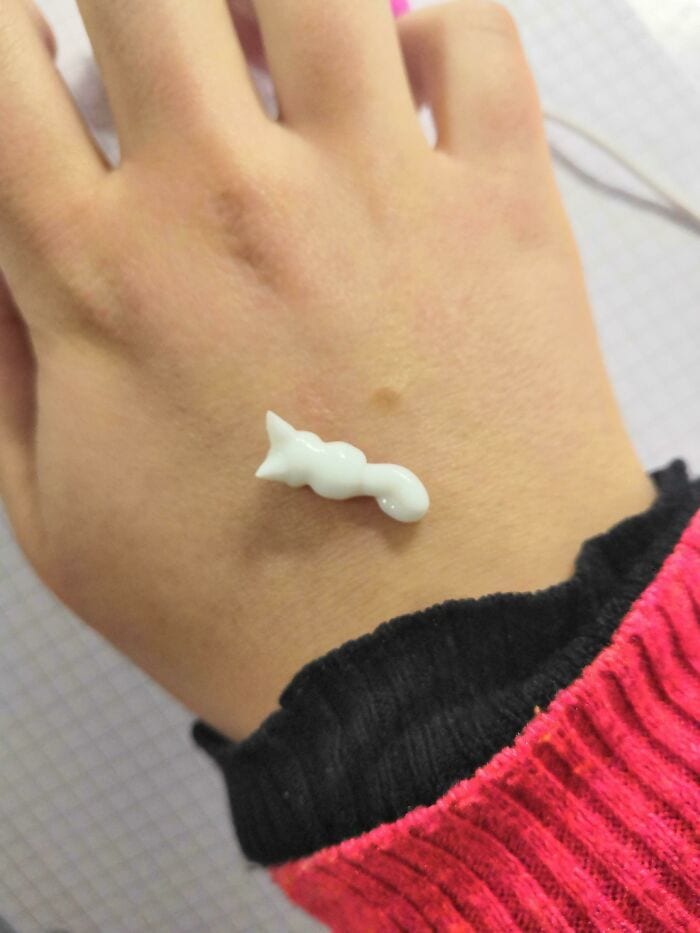
Pareidolia sort of took control of our optic nerve after a while. That’s why we see kittens in hand creams. It’s just how our minds work. It is what it is, and nothing we can do can, in fact, prevent it.
Man on the Moon
When the 60s started hosting us invaders from the stars and Twilight Zone episodes of aliens, we all started to, well, see aliens in our backyard. Up until that period, there wasn’t a UFO scare suddenly; they are everywhere.
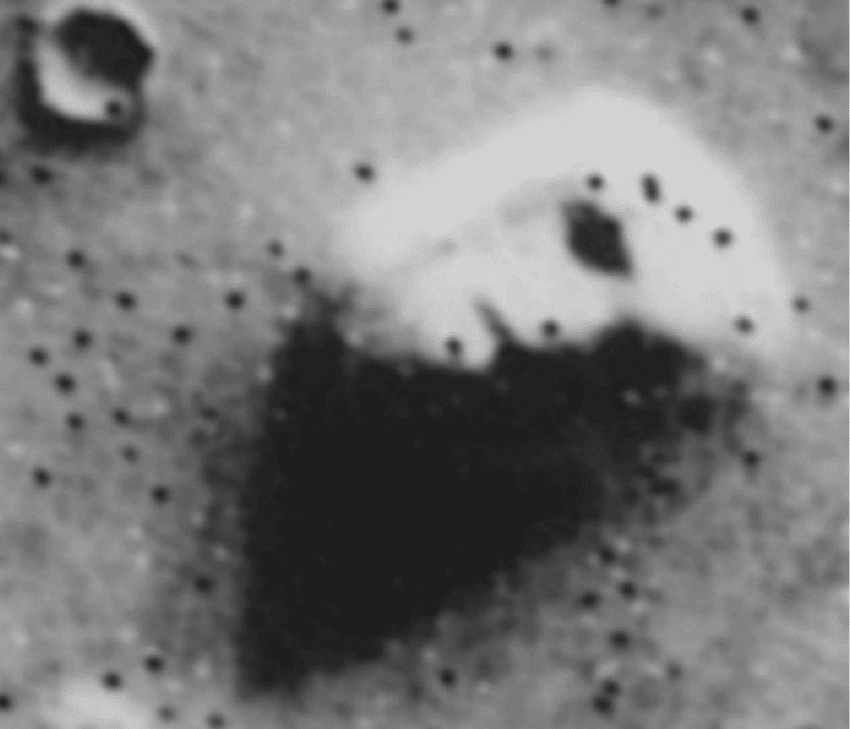
And that’s why we see a face on Mars. Because pareidolia is partly egged by our pop-culture. By Bart Simpsons, By SpongeBob, or by Sci-Fi Magazines. The above is a classic example of pareidolia and one that was used by the UFO community as evidence of extraterrestrial life.
Samurai Crab
Pareidolia is a nifty phenomenon, and if these pictures have taught us anything is that it is completely and utterly natural. We really shouldn’t call people who see Jesus in a chip as a bit odd or strange. How many times have we seen something like that, only less religious?

And here’s the really cool thing. Other species started to adapting to pareidolia? How they started to create patterns on their shell, like the samurai crab, that might scare off other predators. They took advantage of pareidolia by exploiting its optical illusion mechanism.
Smiley Crater
Thanks to pareidolia, we survived. It was crucial to our evolution. Thanks to it, we had an early warning system and managed to fight back all those nasty things that might have ripped the pedestal of dominant species from our grasp.
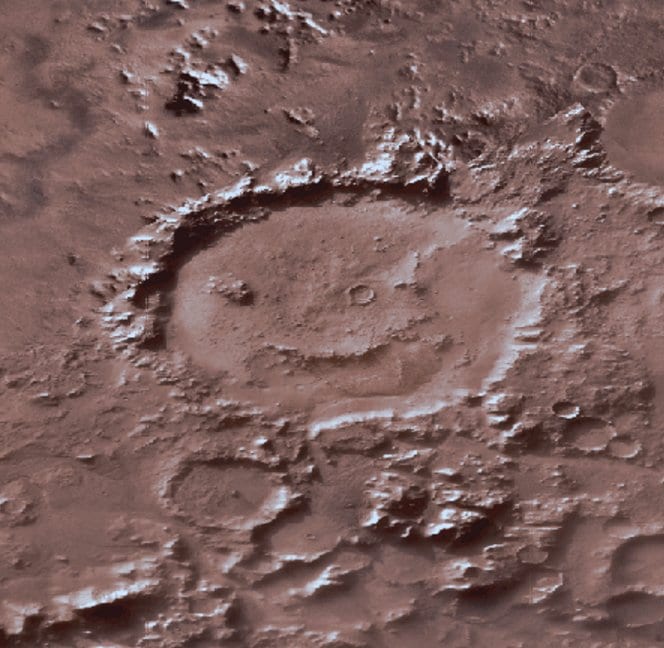
And thanks to pareidolia, we can look at the world and see new and wonderful things. Things like the smile crater on the surface of Mars. New awesome things that bring a smirk to our faces. As I said, it’s not just about survival.
